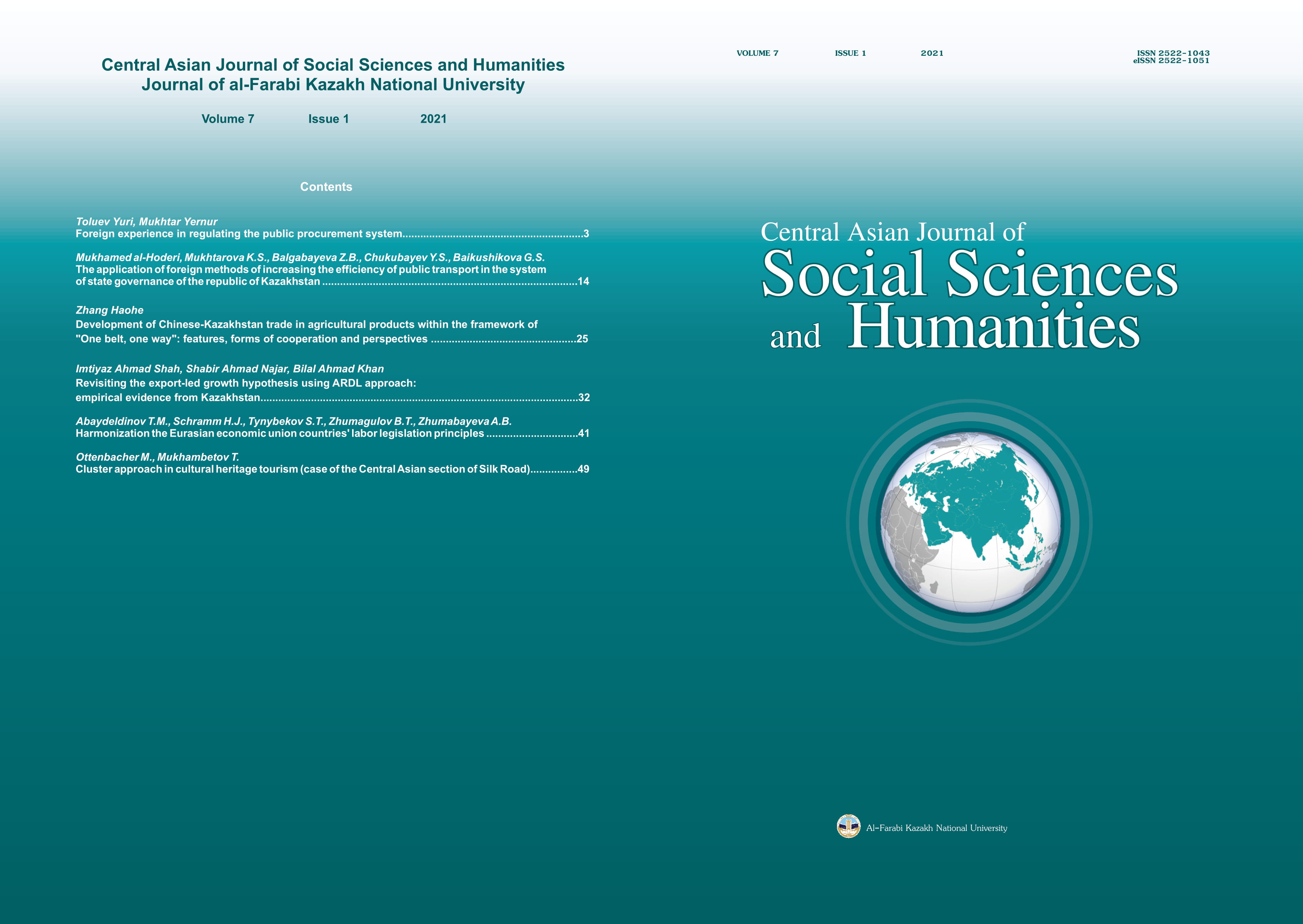CLUSTER APPROACH IN CULTURAL HERITAGE TOURISM
CASE OF THE CENTRAL ASIAN SECTION OF SILK ROAD
DOI:
https://doi.org/10.26577/CAJSH.2021.v7.i1.06Abstract
Modern social and economic science pays little attention to the development of tourism based on new approaches to its management and organization. As a result, the most important sector of the economy develops in practice on the basis of not always effective traditional models. The research problem of the development of a new approach to the organization of tourism products with cross-border nature is developed in this article. The purpose was to develop a methodological toolkit for the development of cross-border tourism based on the cluster approach. To achieve this goal, the study design was based on the study of tourism features that affect the planning and clustering process. The highlighted stages of clustering in the form of identifying tourism objects, designing clusters, forming cluster structures form the basis of a new socio-economic model of the tourism industry. To design a regional cross-border tourism cluster, a method is substantiated and applied to correlate all indicators of cluster tourism development to the number of cultural and historical objects. The selected 19 indicators of development are combined into 6 groups, which make it possible to comprehensively assess the cluster organization of tourism in the region. The approbation of the indicators was carried out on the example of all five countries of the Central Asian section of the Silk Road. Model calculations of the developed set of analytical cluster indicators made it possible to combine the identified objects in each region into homogeneous clusters. In this case, Ward’smethod was used, and the square of the Euclidean distance was used as the objective function and criterion of similarity and difference. The proposed cluster maps make it possible to activate and increase the competitiveness of the tourism product as a whole and give impetus to socio-economic development in each country of the Central Asian region.
Key words: tourism, tourism competitiveness, social and economic development of the region, the Silk Road, tourism cluster, cluster design.




